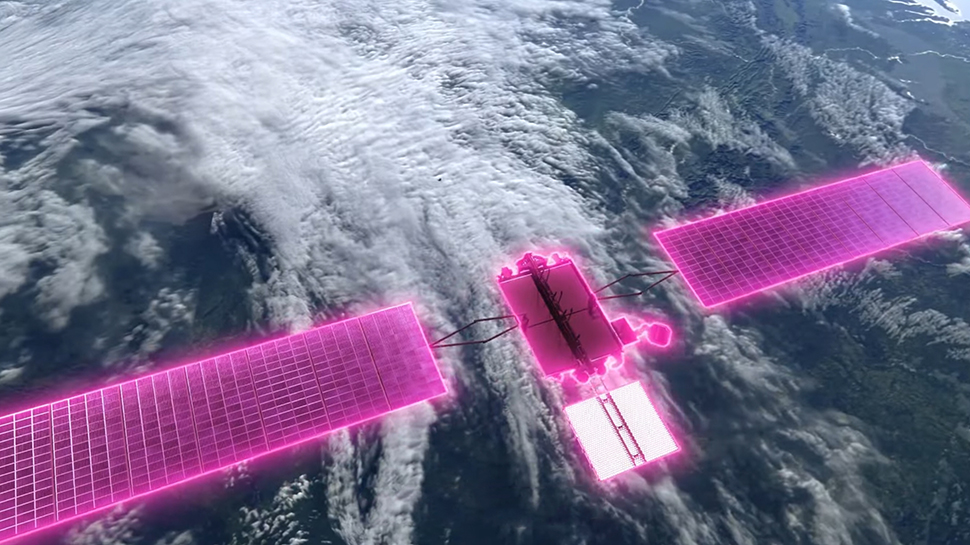- A team of Chinese researchers has achieved a 1Gbps data transmission from a satellite
- The satellite operates 22,807 miles above Earth, while Starlink satellites are at around 341 miles
- This kind of speed could be revolutionary for internet connections in remote areas on Earth, but also in space
It’s no secret that getting a stable, reasonably fast internet connection in non-urban areas is still a challenge (and even those of us living in cities sometimes struggle). Elon Musk’s satellite internet service, Starlink, goes a long way toward making internet more accessible all around the globe – but it just got majorly overshadowed by a small team of Chinese scientists.
This new breakthrough in satellite internet technology (via Interesting Engineering) was achieved by Liu Chao from the Chinese Academy of Sciences and Professor Wu Jian of Peking University of Posts and Telecommunications. The scientists developed a new method of combating the biggest hurdle faced by satellite laser connections: atmospheric turbulence.
Combining two already established technologies and using them in synergy resulted in shockingly fast data transmission. But this isn’t just about speed (although that’s arguably the best part for us, internet users). It’s also about the distance to the satellite and the laughably low wattage of the laser used by the Chinese researchers.
Super-fast satellite speeds with a surprisingly low error rate
A key benefit of this method lies in the relatively low error rate during data transmission, increasing the chance of achieving usable signals by nearly 20% (previously 72%, now 91.1%). As we all know, speeds are just one part of the equation when it comes to internet connections, and anyone who’s ever had to deal with an unreliable ISP knows that stable is often better than faster.
Still, the Chinese researchers were reportedly able to achieve both through a mix of Adaptive Optics (AO) and Mode Diversity Reception (MDR). The former sharpens distorted light, and the latter captures scattered signals. Only when combined did these two separate methods achieve 1Gbps in data transmission, though, and the scientists praise this method for successfully avoiding drops in communication quality.

They carried out the test at the Lijiang observatory in China, using a 5.9-foot telescope that contains hundreds of tiny mirrors – that’s the adaptive optics system in play. These mirrors reshape incoming laser light to account for atmospheric turbulence. Speaking of lasers: the team used a two-watt laser for this experiment, which can be compared to a nightlight. Of course, this refers to laser power and not the satellite’s total energy use.
Once processed and extracted, the light splits into eight base-mode channels, and finally, a special algorithm decides which of these channels is the most promising, in real-time. Choosing the top three signals out of eight gave the researchers a major boost in signal strength, all the while dramatically outpacing Starlink’s downlink speeds – especially impressive given the much greater orbital distance.
This could be good news for internet users worldwide (and beyond)

Comparing this new breakthrough to Starlink reveals a few key differences. First, data transmission speeds reaching up to 1Gbps are not something that Starlink can currently achieve; in our Starlink review, we found that the average for downloads sat at 71Mbps, and Starlink itself promises to deliver between 25 to 100 Mbps on the Standard plan. Second, signal strength and reduced errors in data transmission, despite the massive distance to the satellite, are both promising.
Cutting back on errors and snags in the connection is crucial for users who want to stream videos or send larger files. If this technology is ever made mainstream, we might be able to use the internet even in remote areas without having to compromise on what we can or cannot do. Goodbye, waiting for five minutes for that text to come through – we really wouldn’t miss you.
But the implications here are huge, even if you think bigger than just having a reliable connection everywhere. Boosting signal speed, distance, and strength through this method of laser communication could spell great news for satellite navigation. It could even impact the ability to connect with space missions, such as with the ISS, more seamlessly and without delays.
Right now, this is just a proof of concept – an interesting achievement described in the Acta Optica Sinica journal. Let’s hope that this picks up and gives Starlink a serious run for its money.
You might also like
- What is Starlink? How to get the satellite service for free on your phone with T-Mobile, plus everything you need to know
- Starlink is now offering its satellite internet kit for free on a new plan – but not everyone can get it
- What is Amazon’s Project Kuiper? The Starlink rival explained as its first internet satellites launch
This articles is written by : Nermeen Nabil Khear Abdelmalak
All rights reserved to : USAGOLDMIES . www.usagoldmines.com
You can Enjoy surfing our website categories and read more content in many fields you may like .
Why USAGoldMines ?
USAGoldMines is a comprehensive website offering the latest in financial, crypto, and technical news. With specialized sections for each category, it provides readers with up-to-date market insights, investment trends, and technological advancements, making it a valuable resource for investors and enthusiasts in the fast-paced financial world.
